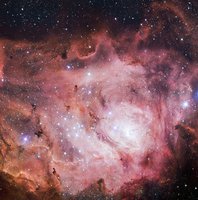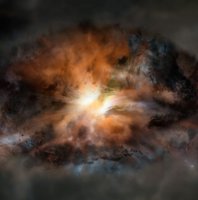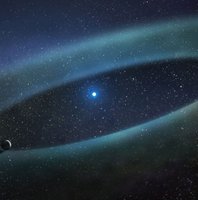The astronomers found the dust disc to begin about 900 million kilometres from the star — slightly further than the distance from the Sun to Jupiter.

This story begins with a star similar to our Sun. The star is hungry and gobbles up hydrogen gas to keep it burning brightly. But one day the hydrogen runs out.
Now the star’s greed finally begins to catch up with it, it grows fatter and fatter, and redder and redder. The star swells up, becoming a enormous red giant star.
Eventually the star grows too big and it can’t keep hold of all its gas any longer. The star’s gas begins to escape and drift into space, wrapping the star in a cocoon. This cocoon is called a planetary nebula.
But this isn’t the end of the story. We find out that the greedy star isn’t by itself — it has a sister. The two stars like to dance, and as they dance around each other the cocoon gradually shifts and warps into the shape of a butterfly!
Not all planetary nebulas take the shape of a butterfly, however. Some form into other familiar shapes, including bubbles, eyes and clowns.
The object in this picture has taught us a few things about how planetary nebulas can become butterfly-shaped. It seems that a large of amount of gas from a dying star and a second, companion star, are the secret ingredients to creating this spectacular shape!




















